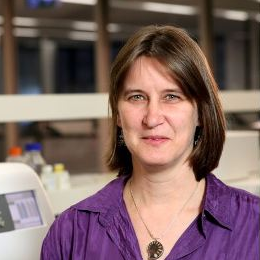Biomarkers in Solid Tumors: From Molecular Discovery via Screening Technology Development to Clinical Practice
A special issue of Cancers (ISSN 2072-6694). This special issue belongs to the section "Methods and Technologies Development".
Deadline for manuscript submissions: closed (31 March 2023) | Viewed by 4685
Special Issue Editors
2. School of Medicine, Western Sydney University, Campbelltown, NSW 2560, Australia 3. South Western Clinical School, University of New South Wales, Liverpool, NSW 2170, Australia
Interests: liquid biopsy; biomarker detection; circulating tumor cell
Special Issues, Collections and Topics in MDPI journals
Special Issue Information
Dear Colleagues,
With the advances in understanding pathways that “drive” cancer and the identification of actionable and prognostic biomarkers, a more personalized treatment regimen is now available for many cancer types. However, there is still a clinical need to screen for novel diagnostic and prognostic biomarkers with high specificity and sensitivity, and liquid biopsy has been hailed as an attractive source of cancer biomarker information. Moreover, using liquid biopsy may allow monitoring response to therapy and detecting minimal residual disease to guide best therapy.
Nevertheless, the entry of liquid biopsy analysis into clinical settings is slow, and this Special Issue explores aspects of biomarker discovery as well as the establishment of technology and practical assays for their ultimately diagnostic screening in liquid biopsies with a focus on clinical utility.
The scope of the Special Issue is broad and covers studies in all cancers (original articles and reviews) conducted on experimental tumor cell and animal models, tissue samples, and liquid biopsies from cancer patients.
We look forward to receiving your contributions.
Dr. Therese Becker
Dr. Yafeng Ma
Guest Editors
Manuscript Submission Information
Manuscripts should be submitted online at www.mdpi.com by registering and logging in to this website. Once you are registered, click here to go to the submission form. Manuscripts can be submitted until the deadline. All submissions that pass pre-check are peer-reviewed. Accepted papers will be published continuously in the journal (as soon as accepted) and will be listed together on the special issue website. Research articles, review articles as well as short communications are invited. For planned papers, a title and short abstract (about 100 words) can be sent to the Editorial Office for announcement on this website.
Submitted manuscripts should not have been published previously, nor be under consideration for publication elsewhere (except conference proceedings papers). All manuscripts are thoroughly refereed through a single-blind peer-review process. A guide for authors and other relevant information for submission of manuscripts is available on the Instructions for Authors page. Cancers is an international peer-reviewed open access semimonthly journal published by MDPI.
Please visit the Instructions for Authors page before submitting a manuscript. The Article Processing Charge (APC) for publication in this open access journal is 2900 CHF (Swiss Francs). Submitted papers should be well formatted and use good English. Authors may use MDPI's English editing service prior to publication or during author revisions.
Keywords
- liquid biopsy
- biomarker
- cancer
- minimal residual disease
- treatment response







